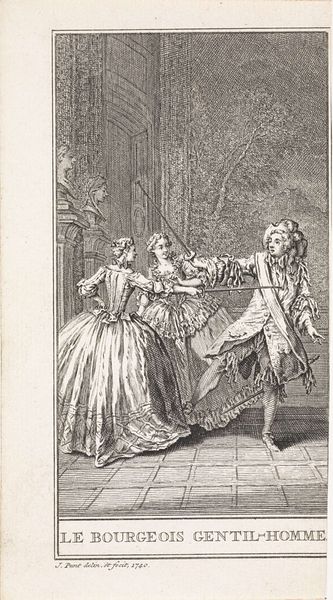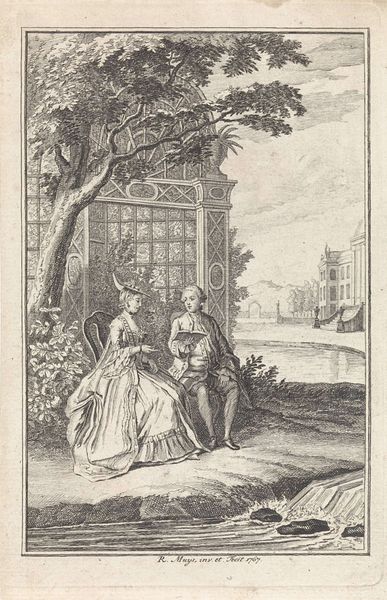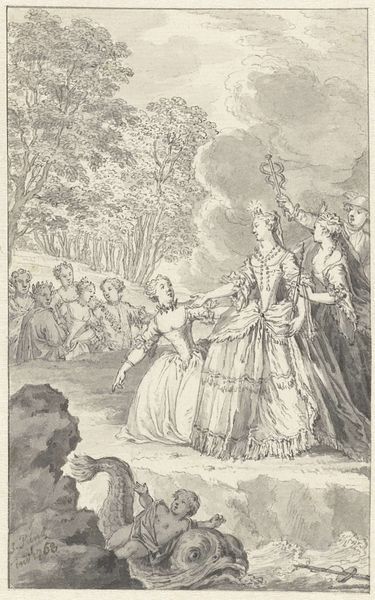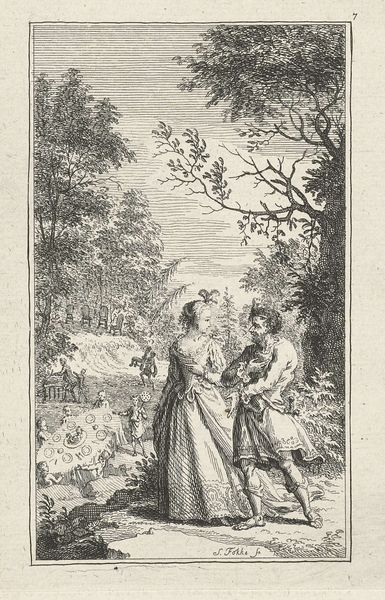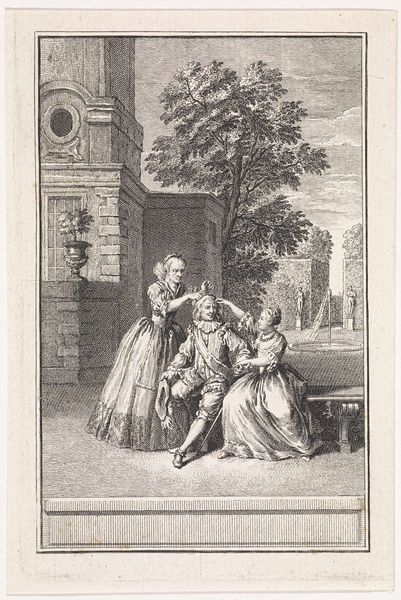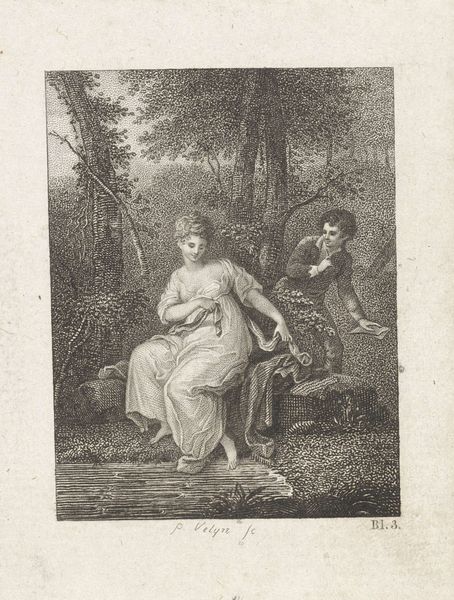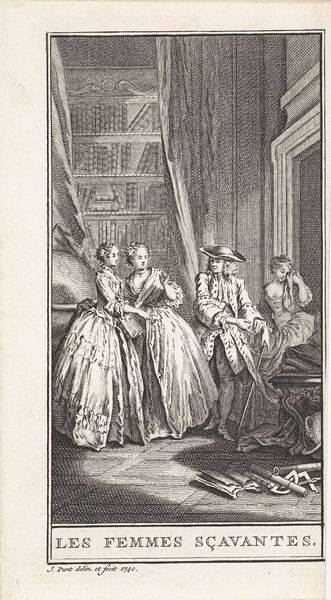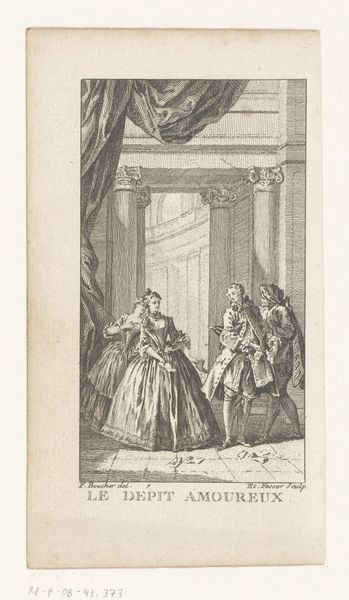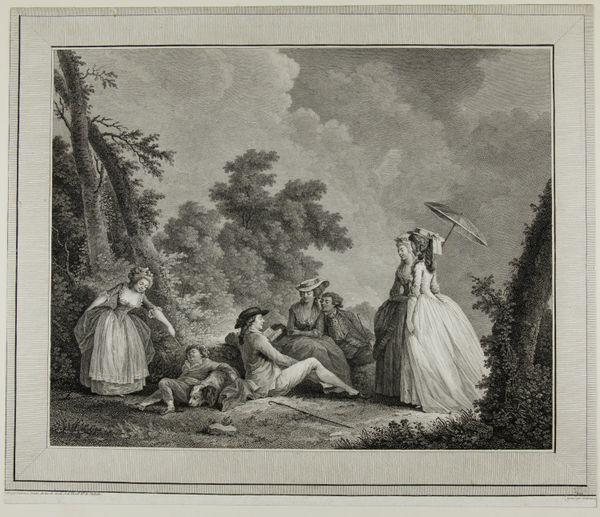
print, engraving
#
baroque
# print
#
landscape
#
figuration
#
genre-painting
#
engraving
Dimensions: height 133 mm, width 74 mm
Copyright: Rijks Museum: Open Domain
Editor: So, here we have Jan Punt's engraving from 1739, "Man Gives Woman a Birdcage". It’s striking how the figures dominate the landscape; the woman's dress is enormous. I’m curious about what this exchange might symbolize. What do you see in this piece, especially considering its historical context? Curator: That’s a great observation about the dress – it practically imprisons her, doesn’t it? The birdcage, in this light, becomes less about freedom and more about a different form of confinement. Consider the patriarchal structures of the 18th century. Is the man offering a gift, or is he reinforcing her position within a gilded cage? It’s interesting that she looks unsure and apprehensive, no? Editor: That's a compelling point. I initially saw the birdcage as a potential symbol of love or affection, but within those power dynamics, it definitely reads differently. So, is Punt perhaps critiquing the limited roles available to women of that era? Curator: Precisely. He’s not simply depicting a scene; he’s subtly commenting on the societal constraints placed upon women, masked perhaps in overt symbolism and allegory for that moment of social history. The garden setting itself – is it a space of freedom, or a carefully cultivated space of constraints? Editor: The whole thing feels a bit sinister now that you point that out. The “gift” becomes a burden and social control tool. Curator: The devil is often in the details, wouldn't you agree? Look again, and everything takes on a double edge when read from the place of someone critically oppressed. Editor: I agree. I came into this assuming the obvious meaning, and now I am realizing this can be subverted. The artist might have different intentions. Thanks for changing my perception.
Comments
No comments
Be the first to comment and join the conversation on the ultimate creative platform.
